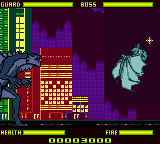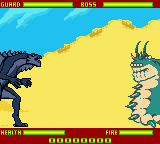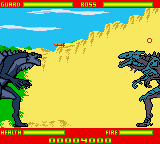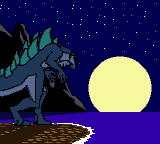Godzilla (Godzilla: The Series): Difference between revisions
Titanollante (talk | contribs) No edit summary |
(Restoring previous copyright icon. Didn't we already agree to use this one?) |
||
| Line 4: | Line 4: | ||
|type2 =Lime | |type2 =Lime | ||
|header ={{Toho}} {{Slash}} {{TriStar}} {{Kaijup}} | |header ={{Toho}} {{Slash}} {{TriStar}} {{Kaijup}} | ||
|copyrighticon = | |copyrighticon =GODZILLA 1998 Copyright Icon.png | ||
|altimage =<tabs style="color:black; padding: 0px; border: 5px solid #{{{{{type2}}} color}}; background: {{{{{type2}}} color}}; margin: 0px;"> | |altimage =<tabs style="color:black; padding: 0px; border: 5px solid #{{{{{type2}}} color}}; background: {{{{{type2}}} color}}; margin: 0px;"> | ||
<tab name="Godzilla">[[File:Godzilla_The_Series_-_Monsters_-_Zilla_Junior.png|330px|Godzilla in Godzilla: The Series]]</tab> | <tab name="Godzilla">[[File:Godzilla_The_Series_-_Monsters_-_Zilla_Junior.png|330px|Godzilla in Godzilla: The Series]]</tab> | ||
Revision as of 21:24, 30 April 2017
| ||||||||||||||||||||||||||||||||||||||||||||||||||||||||||||||||||||||||||||||||||||||||||||||||||||||||||||
The Godzilla (ゴジラ Gojira) from Godzilla: The Series, also known by fans as Zilla Junior or Godzilla Junior, is an incarnation of Godzilla featured in the 1998 TriStar animated series Godzilla: The Series, and introduced in the final scene of the 1998 film GODZILLA.
It is the second incarnation of Godzilla to appear in an American animated series, after the Hanna-Barbera Godzilla.
Name
This incarnation of the monster is simply referred to as "Godzilla" throughout Godzilla: The Series. In the Godzilla: The Series episode Competition, the Japanese characters always refer to him as "Gojira," even when speaking English.
There's a popular misconception saying that Toho honored this version of Godzilla by calling him "Godzilla Junior," seeing that he was supposedly worthy of the "Godzilla" name. Years later, it turned out that this rumor was a false statement created by fans of the animated series, and Toho had added no comment on the matter.
Personality

This Godzilla is very different from his late father. Unlike his late father, who reproduced asexually, this Godzilla is sterile (or possibly can only reproduce sexually and a mate simply doesn't exist, since Nick only stated that there was "no risk of him reproducing"). In the episode End of the Line, however, he falls in love with a mutant Komodo dragon, named Komodithrax, and becomes surrogate father to her unborn offspring. Unfortunately for Godzilla, Komodithrax and the giant egg she laid fell down a crack in the ice and apparently perished at the end of the episode.
Godzilla is also much more aggressive than his parent; rather than fleeing from an attack, he will usually, like the Japanese Godzilla, fight or destroy his attackers. For a mutation, he is very intelligent and shows the ability to make moral decisions. For example, in the episode DeadLoch, where he fights against the Loch Ness Monster, he then later aids Nessie in recovering her stolen baby (this is when Godzilla makes a "moral decision", although H.E.A.T. member Monique Dupre says that it's just instinctual for creatures to work together). In Monster Wars: Part 3, he chooses his adoptive father Niko Tatapoulos over his biological father, Cyber-Godzilla, and attacks it.
Godzilla also shows some planning and strategy in his fighting style, though it is shown that he can resort to brute force if he is angered enough. He has even shown a sense of humor, (much like Godzilla in Ghidorah, the Three-Headed Monster) as in the climax of one episode, he splashes members of the H.E.A.T. team with water in a playful fashion.

His most prominent trait, though, is his protectiveness and loyalty towards Dr. Nick Tatopoulos. When Nick is journeying around the world, Godzilla is never far behind. The proof of this is thatGodzilla has often saved Nick and other members of the H.E.A.T team from dangerous situations. In one situation in particular, Godzilla managed to catch Nick (who was falling) on top of his head before letting him down gently. The only time Godzilla's loyalty faltered was when he met his biological father, resurrected as Cyber-Godzilla, for the first time. He could be seen cowering in fear not unlike a little boy being scolded severely by his father when Cyber-Godzilla roared at him. He was unwilling to attack his own father despite being told by Nick to do so. Nick then sadly said that Godzilla "dumped" him for his birth parent. Thankfully, Godzilla later broke free of Cyber-Godzilla and the Tachyons' influence and chose Nick over his birth parent.
Origins
This Godzilla was the last surviving offspring of the first Godzilla that attacked New York in 1998. He, as well as all of his siblings, were eggs laid inside Madison Square Garden by Godzilla. Unlike his siblings, this single baby Godzilla survived the bombing of Madison Square Garden and was later found by Dr. Niko Tatopoulos, who kept him safe from the military.
History
GODZILLA (1998)
In 1998, a giant monster given the classification of "Godzilla" by the U.S. military made his nest in the Madison Square Garden in New York City, New York. There the creature laid about two hundred eggs which hatched into baby Godzillas. The military carried out a plan to bomb Madison Square Garden and kill all the baby Zillas, which was successful, for the most part. Godzilla, angry at the death of his offspring, terrorized the city until he was shot down by several missiles from F-18 Hornets. Unknown to everyone, an egg survived among the fires of Madison Square Garden.
GODZILLA 2
- Main article: Godzilla 2 (Unmade 1998 film sequel).
A second Godzilla was meant to star in GODZILLA 2 and GODZILLA 3, both of which were scrapped in favor of Godzilla: The Series. He would have lived on Monster Island and fought a giant insect monster called "Queen Bitch." In this film, he would have been portrayed as being more similar to the original Godzilla than he was in the animated series, reproducing asexually and not possessing atomic breath.
Godzilla: The Series
- Main article: Godzilla: The Series.
Abilities
This Godzilla shows a variety of powers and skills that set him apart from his monster enemies. He is generally regarded as the strongest mutation on Earth with the show's continuity.
- Godzilla has green atomic breath.
- Godzilla has displayed great durability.
- Godzilla has regenerative abilities.
- Godzilla has extraordinary jumping abilities and is extremely agile.
- Godzilla is an excellent swimmer.
- Godzilla can burrow underground to hide or find something.
- Godzilla has displayed semi-sapient intelligence.
- Godzilla has great stamina and can travel many miles in the world.
Atomic Breath
This Godzilla's signature weapon is his green atomic breath; something his father lacked. The atomic breath has a long range and is extremely hot, capable of melting steel and turning sand into glass. In the Godzilla: The Series Gameboy game, Godzilla instead possesses an attack called "Fire Ball," which takes the shape of a sphere rather than a ray.
Durability
Another ability that sets this Godzilla apart from his parent is his ability to withstand high levels of damage. Whereas his father was killed by a relatively small amount of missiles, this Godzilla is shown taking large amounts of heavy artillery with no harm, much like the original Japanese Godzilla.
In relation to his durability is his enhanced regeneration, which allows Godzilla to recover from injuries and regain his strength quickly.
Stamina
Godzilla is able to travel thousands miles in the ocean without any obvious signs of fatigue.
Physical Strength
Godzilla has demonstrated great physical strength. He often overpowers other mutations with sheer brute strength, being able to lift other mutations in the air. His claws are extremely sharp and are capable of shredding steel. Godzilla's tail is an incredibly powerful weapon as well that can be used to crush and strike his opponents.
Godzilla is also incredibly fast and nimble, moving incredibly quickly from one location to another and being able to climb rapidly. In addition, Godzilla is shown to have quick reflexes.
Additionally, he is an extraordinary burrower, as moments after hatching he could quickly burrow through many yards of concrete to escape the ruins of Madison Square Garden. Once fully grown, Godzilla could tunnel incredibly large distances in extremely short periods of time, sometimes appearing on the battlefield from underground.
Amphibiousness
Godzilla spends most of his time in the water, as he is a natural swimmer and is able to breathe underwater. Godzilla once rested unconscious underwater for an extended period of time while sick.
Intelligence and Communication Skills
Godzilla is shown to be very intelligent. He has shown planning tactics in battle and the ability to make moral decisions. He is also shown to have a large brain for his body size, a trait very unique among reptiles in general. As the series progressed, Nick noted Junior seemed to get more intelligent.
Weaknesses
Godzilla is generally considered to be the most powerful mutation in Godzilla: The Series, though he still has a number of exploitable weaknesses.
Godzilla seems to have an aversion to bright lights - a weakness which was exploited by both Cameron Winter (who used powerful searchlights while attacking Godzilla with the Cyber Flies) and Maximillian Spiel (who used high-intensity quartz beams during Godzilla's battle with Rhinosaurus).
Poison has be been shown to damage Godzilla more than most types of attacks. He is also vulnerable to dehydration, having almost died due to it when fighting the monster Medusa.
Electricity has done some damage to Godzilla, although he is mostly able to resist it - such as in his battles with the Crackler and the Lizard Slayers.
In the episode Future Shock, it is revealed that Godzilla was killed by genetically engineered creatures called the D.R.A.G.M.A.s in an alternate future, as his attacks and the combined might of all the planet's mutations were ineffective against the creatures. Thankfully, H.E.A.T. was able to avert this future by having Godzilla kill the weaker juvenile D.R.A.G.M.A.s in the present.
Filmography
- GODZILLA (1998)
- Godzilla: The Series (TV 1998-2000)
Video Game Appearances
Godzilla in Godzilla: The Series
- Zilla Junior Game 2.png
Roar
This Godzilla's roars were mostly recycled Godzilla 1998 and Japanese Godzilla roars.
Trivia
- This incarnation of Godzilla hasn't made any official appearances since his animated series was cancelled back in 2000 due to Sony and TriStar losing the rights to the Godzilla franchise in 2003.
- Interestingly, this Godzilla is said to weigh 60,000 metric tons as revealed in the episode Cash of the Titans,[3] making him officially heavier than all incarnations of Godzilla except his incarnation from Godzilla vs. King Ghidorah through Godzilla vs. Destoroyah, which also weighs 60,000 metric tons, and his incarnations from Legendary Pictures' Godzilla and Godzilla Resurgence, which are both heavier.
See Also
References
This is a list of references for Godzilla (Godzilla: The Series). These citations are used to identify the reliable sources on which this article is based. These references appear inside articles in the form of superscript numbers, which look like this: [1]
|
| ||||||||||||||||||||||||||||||||||||||







